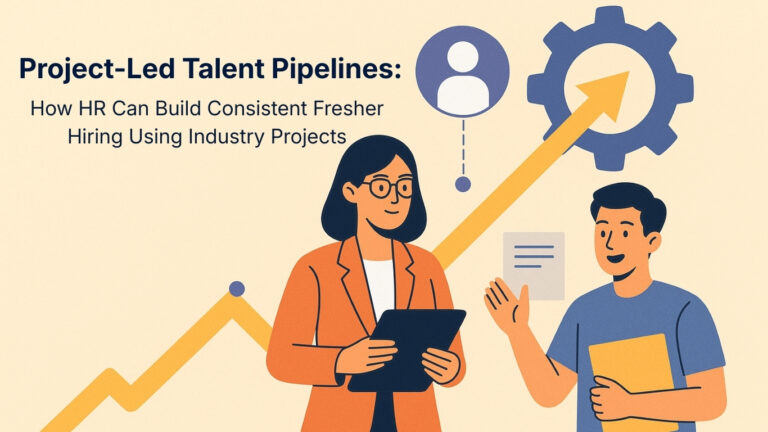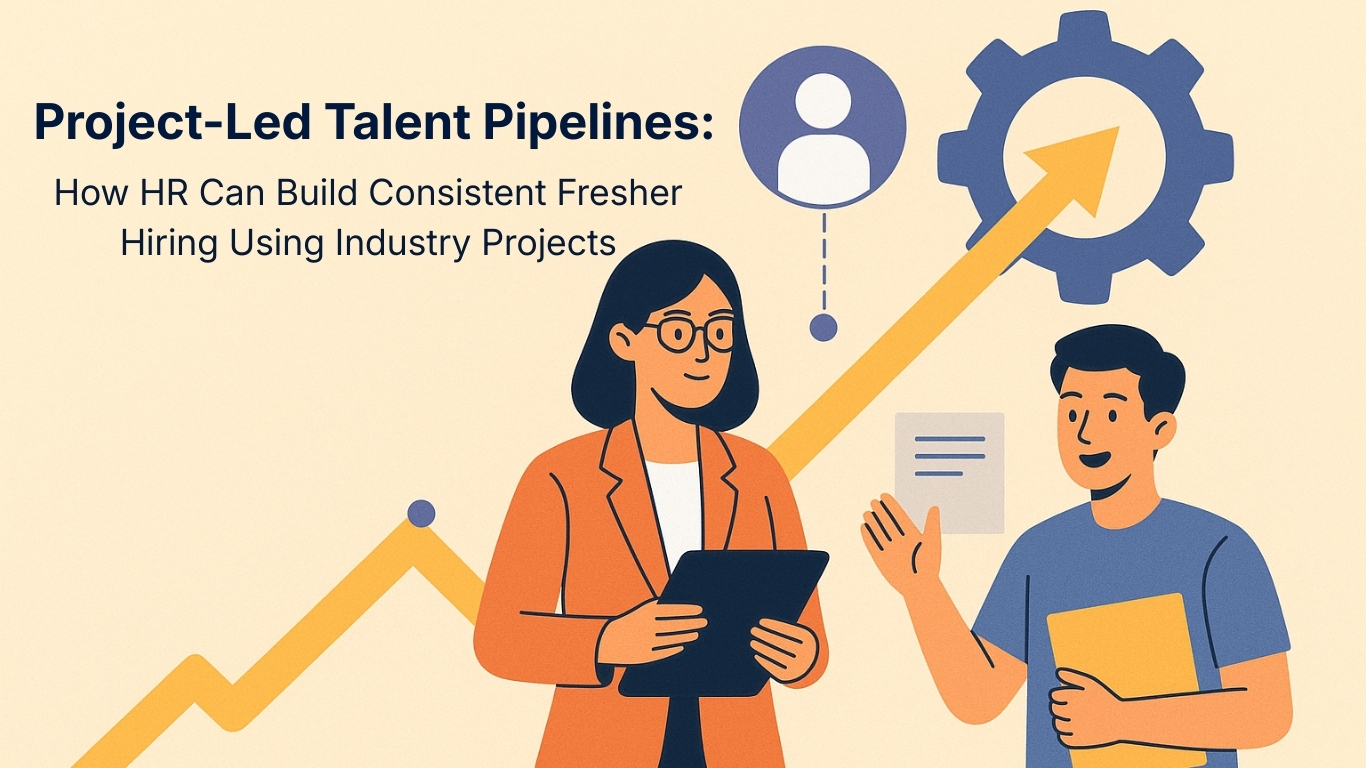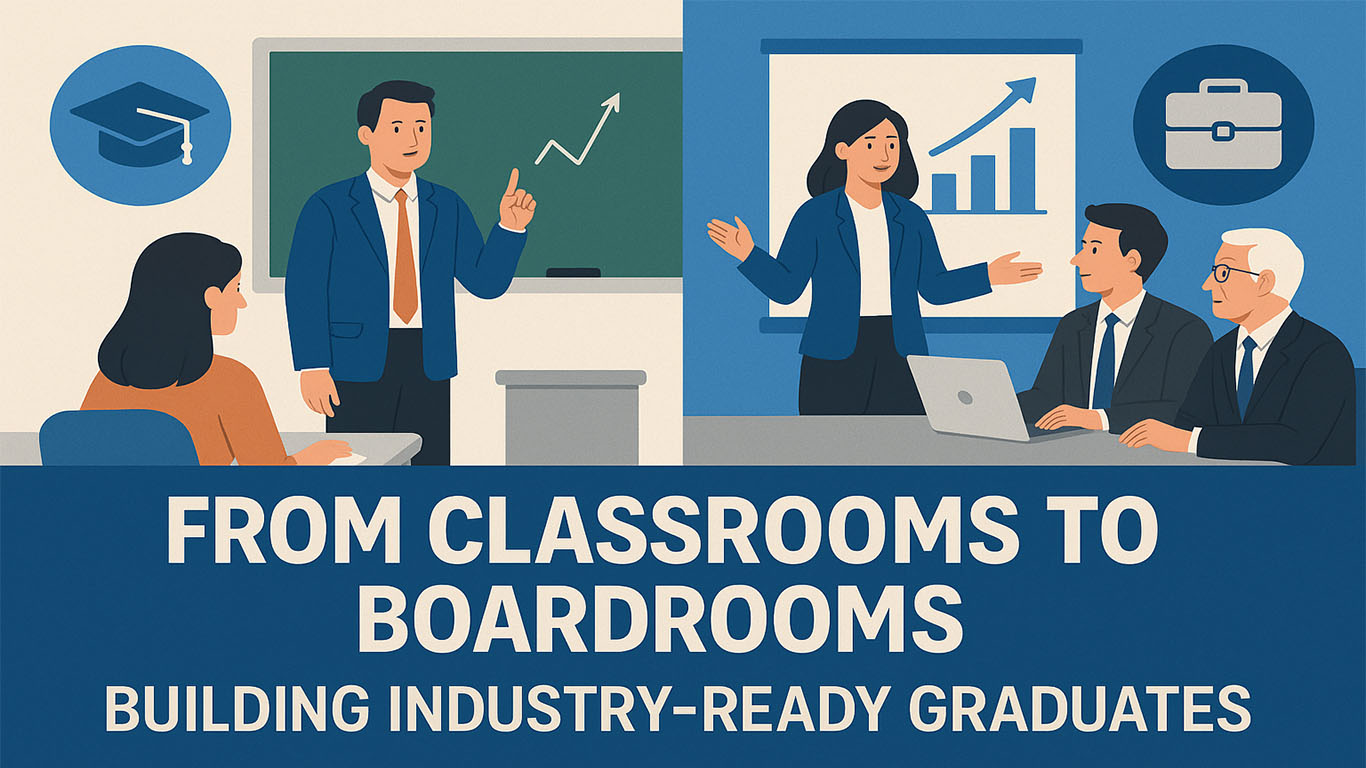Most fresher hiring strategies still follow a familiar pattern:
- Campus visits
- Generic tests
- CV screening
- Short interviews
Every year, HR teams repeat the same experience: limited visibility into real skills and mixed outcomes after joining.
Employer-driven projects offer a more reliable route, not as a one-time experiment, but as the backbone of a repeatable talent pipeline.
Why Projects Beat Traditional Fresher Hiring Channels
Projects reveal what CVs and tests cannot:
- How candidates handle ambiguous, real business problems
- How they collaborate and communicate
- How they manage time, feedback and iteration
- The quality of deliverables in a real-world context
Structured platforms turn this into performance-based project evaluation, giving you data instead of guesswork.
Designing a Project-Led Talent Pipeline
Step 1 – Define Roles and Competencies
Identify one to three key fresher roles, such as:
- Business Analyst
- Marketing Associate
- Graduate Engineer Trainee
- Product or Operations Associate
For each role, list four to five core competencies (for example analytical thinking, stakeholder communication, problem-solving, resilience).
Step 2 – Create Employer-Driven Project Briefs
Convert these roles into real projects, such as:
- Market entry analysis for a new region
- Process optimisation for a specific workflow
- Prototype testing and feedback loop
Each project should be:
- Time-bound (typically three to six weeks)
- Designed for student teams
- Linked to clear evaluation criteria
Step 3 – Partner With Universities Rather Than Only Visiting Them
Instead of relying solely on annual campus drives:
- Partner with universities to integrate your projects into their curricula
- Use technology platforms to reach multiple campuses efficiently
- Allow students to apply based on interest and skills, often with AI-powered project matching
This approach broadens your reach and raises engagement.
Step 4 – Use Performance-Based Evaluation as a Pre-Hiring Funnel
For each student or team, track:
- Contribution and ownership
- Quality and completeness of deliverables
- Timeliness and reliability
- Response to feedback and ability to improve
Consolidate this into performance-based insights and reports. Shortlist top performers for internships, pre-placement offers or fast-tracked interviews.
Step 5 – Build a Living Talent Pool, Not One-Off Projects
A common mistake is treating projects as a short-term branding or CSR initiative.
Instead:
- Run projects every semester or quarter
- Maintain a living database of evaluated students
- Tag students by domain, location, graduation year and performance
- Re-engage top performers with webinars, hackathons and targeted opportunities
Over time, this becomes an always-on fresher pipeline that is more predictable and high-signal than traditional approaches.
Beyond Hiring – Brand, Insights and Innovation
Project-led pipelines also:
- Deepen relationships with universities
- Position your company as a learning-oriented employer
- Generate fresh ideas and prototypes directly from students
If you are serious about improving fresher hiring, projects should not sit at the periphery. They should power the core of your talent strategy.





